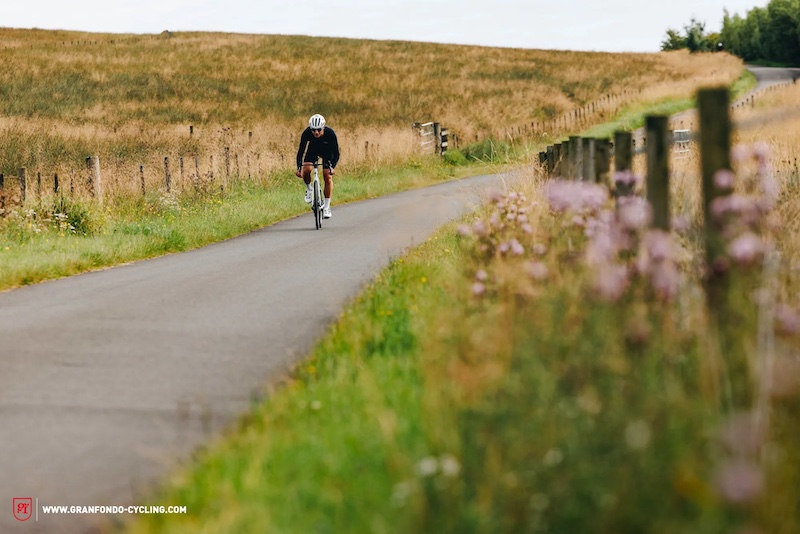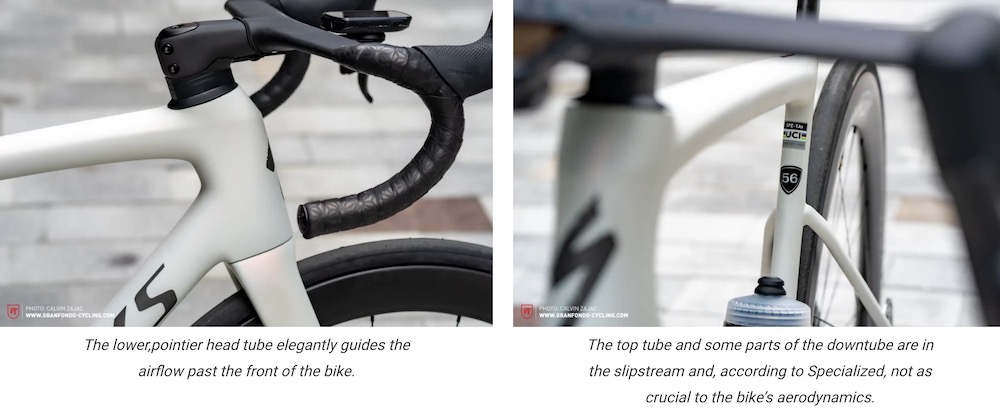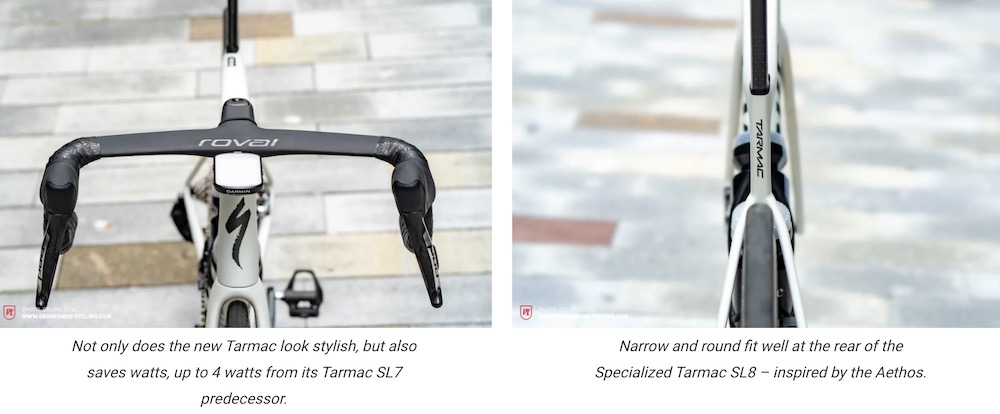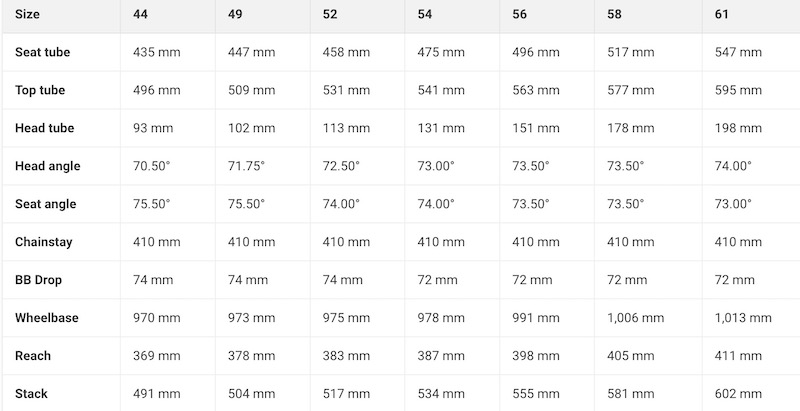Product Categories
New Products
Lighter, stiffer, faster – but also better? At Glasgow’s UCI World cycling championships we had the opportunity to take a close look at Specialized’s latest all-purpose aero weapon, the Tarmac SL8 2024. Specialized officially launches the Tarmac SL8 — faster than the Venge, stiffer and lighter than the SL7, and all-new 'speed sniffer' head tube.

Riding Specialized means riding superlatives, at least in terms of marketing. But is the Specialized Tarmac SL8 a revolutionary new take on road cycling? True to the motto “One Bike to Rule Them All”, Specialized continue to push the boundaries in an attempt to create the ultimate all-round racer. This time, however, the American manufacturer really means business, presenting what’s meant to be not only the lightest, but also the fastest bike in the peloton. To make this possible, Specialized combined the Venge’s head tube and the Aethos’ bottom bracket area. According to Specialized, the frame weighs less than 700 g and is also faster than the Venge aero weapon, which is admittedly getting on in years.
With the release of the Tarmac SL7 back in 2020, Specialized declared the Venge deceased, and with it the era of aero bikes. Three years on, however, it seems that not all manufacturers got the memo. The trend of assigning different roles to bikes is making a comeback. The Factor O2 VAM and the new Orbea Orca focus on lightweight construction, while Scott’s Foil is aimed at speed junkies. Only Cannondale’s new Supersix remains true to its all-round roots. Sure, Specialized have the Aethos, but calling it a road bike is a bit of a stretch.
Now the question is:do all-rounders still fit into the picture? The original point remains valid: while all-rounders are probably still the faster bikes, they’re inferior to the specialists in their respective fields. Perhaps, it makes more sense to follow the example of the Jumbo Visma pros and choose the best bike for the job, rather than opting for an all-purpose weapon. For hobby riders like us, the choice isn’t always easy, and very few of us have the luxury of choosing between several bikes.
At first glance, it’s evident that the SL7 and SL8 are heading in the same direction. In purely visual terms, not much has changed, except for the head tube, which is now significantly lower. In times when every brand seems to have created a lighter, stiffer and, of course, faster bike, how do Specialized back up their claim? In a nutshell, they used the experience gathered in lightweight construction while developing the Aethos and mixed it with some “new” old aero know-how and the optimised carbon layup used for their latest road bike.
While they were at it, they also improved the aerodynamics in three areas. The most significant and noticeable change is the head tube. As seen on the Venge and aero bikes from 3T and Cannondale, the head tube extends further forward. This ensures a pointier shape and at the same time allows for a cleaner transition from the top tube to the down tube.

The second major change is the one-piece cockpit. Just before the launch, Specialized introduced the new Roval Rapide cockpit, which is also compatible with the old Tarmac SL7 that relies on a conventional stem/handlebar combo. The new cockpit design saves up to 4 watts compared to its predecessor, but it is currently only available with the S-Works models. Although this innovation is impressive in terms of power-saving, one-piece aero cockpits are nothing new on road bikes and have been around for several years.
Specialized also improved the bike’s rear-end aerodinamics, taking advantage of the new UCI regulations that allow thinner seatstays and a seat tube as narrow as the SL7’s seatpost. The battery for the Shimano Di2 drivetrain is tucked away inside the seat tube directly under the seat post.
These subtle changes give the new Tarmac SL8 a more rounded, visually faster appearance. In direct comparison with the Venge, the bike’s said to be 16.6 seconds quicker over 40km, which is quite an achievement considering that the Venge is a thoroughbred aero machine. That said,, the aero improvements are rather limited, giving the impression of an evolution rather than a real revolution.

The biggest improvement, however, is the weight: in size 56, the S-Works frame in the lightest Satin Carbon/Chameleon Snake Eye finish is meant to weigh just 685g, which is more than 100 g lighter than its predecessor and about the weight of a chocolate.
Allegedly, the expertise gained from developing the Specialized Aethos played a crucial role in achieving this incredibly low weight. According to chief developer Peter Denk, the area around the bottom bracket is almost identical to that of the Aethos. The downtube, seat tube, and chainstays have been borrowed from the lightweight racer, resulting in substantial weight savings.
Moreover, the carbon layup was tested to perfection; it took the Americans 55 virtual iterations on Specialized’s supercomputer to find the ideal layup.
The result is one of the lightest road frames currently available on the market. A fully assembled bike should be within the UCI weight limit of 6.8kg, a real revolution for an all-round race bike.
Specialized use the same process to find the perfect carbon layup for all sizes and frame variants, ensuring consistent handling across all models and sizes. But the surprises don’t end here: the new Tarmac SL8 is supposed to take handling and ride quality to a whole new level compared to all previous Tarmac models and only the Aethos is slightly lighter and more comfortable.
“If it ain’t broke don’t fix it!” is what Specialized must have thought when they decided to leave the geometry of the new Tarmac SL8 untouched, relying on the proven numbers of its predecessor instead. And that was a good move, because the Tarmac is renowned for its direct and agile handling, which is probably why it is such a popular race bike.

All models of the new Specialized Tarmac SL8 2024 at a glance
First off, the Tarmac SL8 is not the bike for you if you’re a fan of mechanical groupsets. Both the frame and Roval Rapide cockpit are exclusively compatible with electronic components. However, this aligns with the price range, because in typical Specialized fashion, these bikes aren’t cheap.
The entry-level Tarmac SL8 Expert retails at € 6,500 and comes equipped with a SRAM Rival AXS drivetrain, while the flagship S-Works Tarmac SL8 model is available with either an Shimano DURA-ACE Di2 or SRAM Red eTap AXS groupset, retailing at an an eye-watering € 14,000. However, the S-Works model comes with a new Roval Rapide cockpit and power metre as standard. All other models rely on the cockpit of the previous Tarmac SL7. Specialized have maintained the same price point as with the previous model, but have dropped the more affordable Comp model for the time being. The framesets, though, are a little more expensive. Specialized charge € 5,500 for S-Works frames, while a standard Tarmac SL8 frame retails at € 4,000.
The new Specialized Tarmac SL8 2024 has finally arrived and looks a lot like its SL7 predecessor. In fact, it’s hard to tell the two bikes apart at first glance. The expected revolution may be more of an evolution and a mix of frames that could have existed a generation ago. The real highlight and revolution, however, is the weight. In practice, the Tarmac SL8 competes directly with the lightest climbing bikes and even makes some aero machines break into a sweat.
Notes: article from website